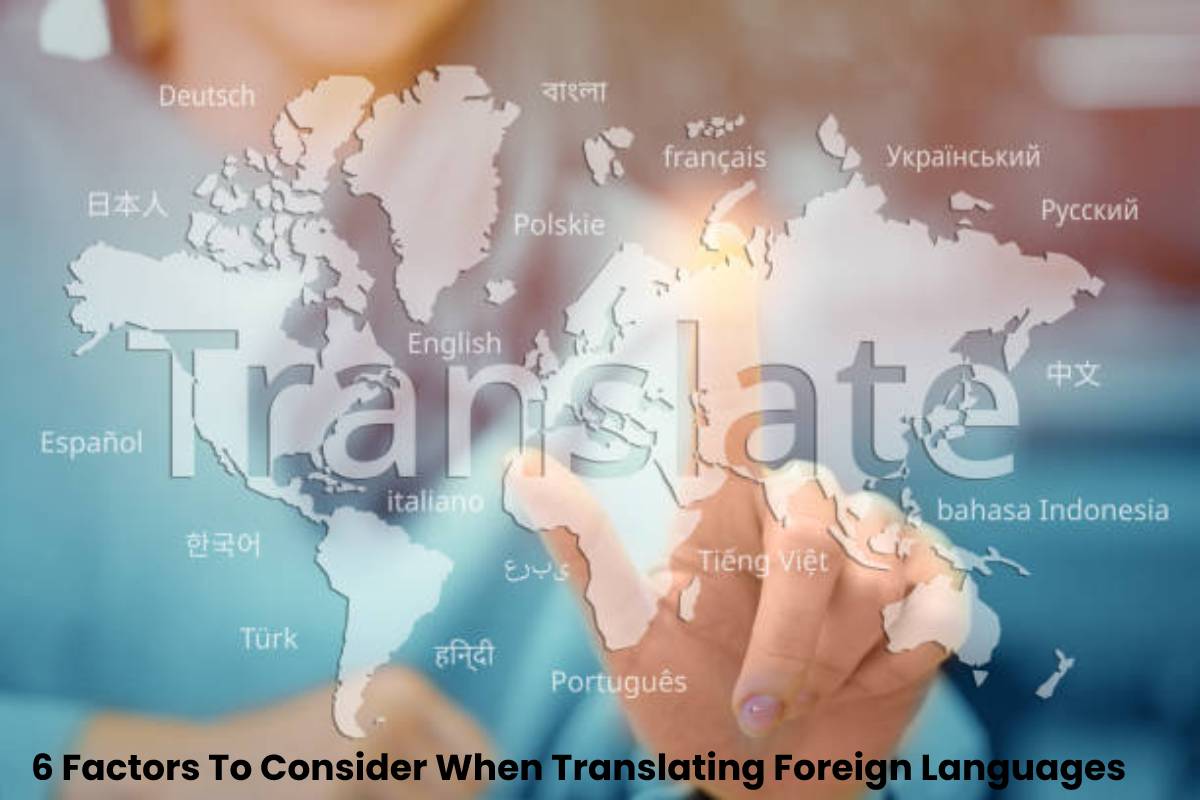Translation enables businesses and individuals to communicate with people and groups that speak a different languages. They can be a market for your goods, business partners, workers, or friends. Unfortunately, if the translated work is not right, there is a risk of the core message being lost, inaccurate facts being transmitted, and the use of words that may sound disrespectful to the audience.
When translating foreign languages, you must keep in mind various factors to avoid the above-mentioned problems. Here are six such factors.
Table of Contents
Accuracy
The translation should be accurate. The translated piece must convey the same message as the one written in the original language. Keep in mind the culture of the foreign language speakers when choosing words. Otherwise, you risk invoking negative connotations and losing the message. Depending on the target audience of the content, some words may not be appropriate.
Grammar and Spelling
Follow the grammar rules of the foreign language to ensure that your work flows logically and sounds correct. Otherwise, keep your sentences short and simple so that they can be read with ease. In the same breath, avoid fluff in your writing by ensuring the translated content delivers the message in the easiest and simplest way possible.
If you are translating from an audio transcription, note the pauses, commas, and periods. Sometimes, speakers fail to pause or end the sentences as required in conventional writing. However, you should include these in your draft so that it is easy to read.
The use of points and commas, especially when writing numbers, is different in some languages. For example, in the English language, commas and periods are placed this way in numbers 1,005.02. However, it is written as 1.005.02 in German and 1 005,02 in Swedish.
Translate into the Correct Dialect
Keep in mind the exact dialect that the client wants for their content. For example, there are seven dialects of the Malay language. Therefore, if you are offering an English to Malay translation service, note the exact dialect that you are communicating with. Each language has several dialects. English, for example, has British, Canadian, American, and Australian dialects, among others.
If you are not sure about the right dialect but one is used as the national language or the most prevalent, it is most likely the one that is required. Otherwise, it is best to inquire from the customer.
Slang, Idioms, and Catchy Phrases
While it is not possible to know every idiom, phrase, and proverbs of the foreign language, it is good to include a few in your final draft. They help connect with native speakers in the foreign language. However, it is important to check the context in which such phrases and idioms are used. Otherwise, you risk using them for the wrong text and losing your message.
On the other hand, the use of slag depends on the target audience. Slag is rarely used in official communications or formal writing. However, when translating content that targets the youth or certain groups where the use of slang is prevalent, you may use such words.
The Writing System
There are languages where content is read from left to right, which is quite different from many conventional languages. Others, like Hebrew and Arabic, have a series of special characters that have specific meanings when used in the content. You must keep this in mind when considering using any of them.
Consistent Use of Similar Structures
In any written piece, there are several terms, phrases, and numbers that are repeated. For example, dates, names, and abbreviations. Most of these phrases have different ways of writing them. It is important to determine how you will write them at the beginning of your content and maintain the same structure throughout the entire piece.
If you are writing abbreviations, ensure that you provide full words at the first mention of the word. You can have a glossary at the end of your content that explains the abbreviations that you used in your piece. It saves you from having to repeat long words at every instant where the phrase is used.
Keep Your Content Simple
Ensure that the translated piece is easy-to-understand for the people who are going to read it. Unless you are offering translation services to a knowledgeable audience, avoid jargon and hard-to-understand words. Check for simpler words that are used in everyday language.
Remember the goal of the client that they seek to fulfil with the content. This will help you choose the right tone for your content. If you are translating from transcription, check the flow, tone, and choice of words if the target audience is not defined.
In addition to the above points, it is important that you proofread your work to ensure that it is flawless and error-free. If you are translating text created from transcription services, ensure that your transcribed text is also accurate so as not to carry errors into the final piece.




